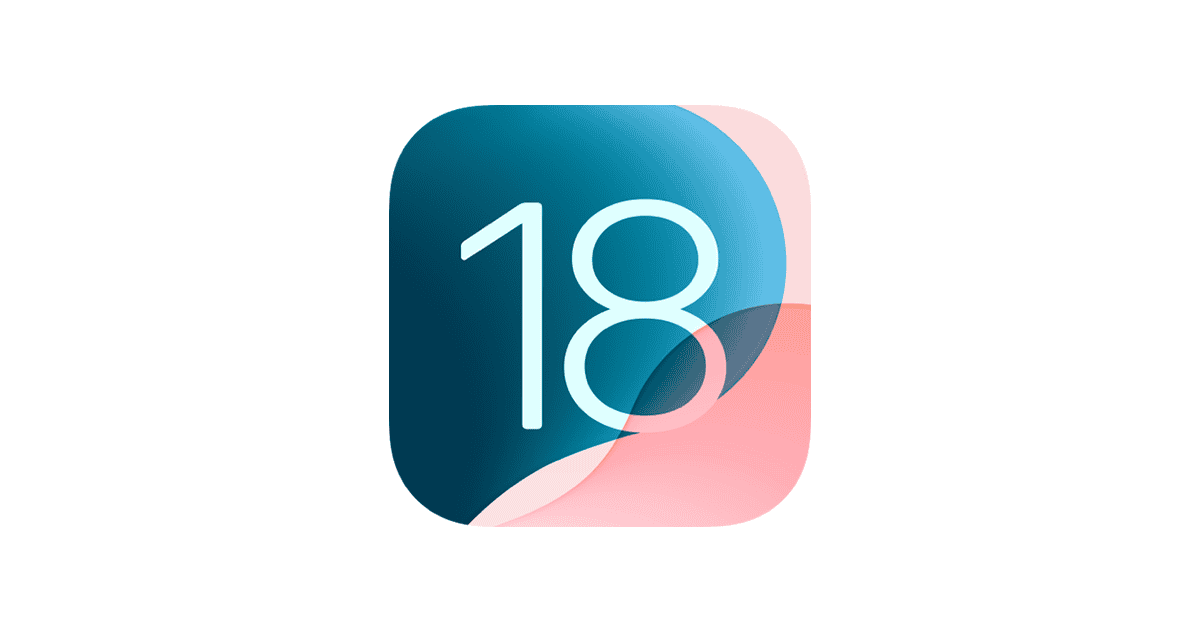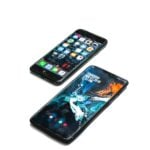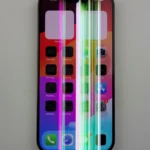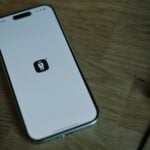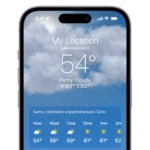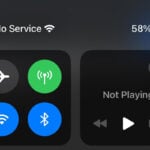Apple is expanding its satellite connectivity footprint in a major way with the release of iOS 18.5—this time reaching back to include the iPhone 13 lineup. Thanks to new carrier-based satellite integration, users of the iPhone 13, 13 mini, 13 Pro, and 13 Pro Max will soon gain access to basic satellite messaging services through supported wireless providers like T-Mobile. This shift marks a significant step forward in making off-grid communication more accessible to a broader iPhone audience.
A New Era of Connectivity for Older Devices
Previously, Apple’s satellite communication features were limited to the iPhone 14 and newer models, which include dedicated hardware for features like Emergency SOS via satellite. However, iOS 18.5 introduces a software-based bridge for older devices, allowing them to connect to low-Earth orbit satellites through participating carriers—most notably, T-Mobile’s emerging partnership with SpaceX’s Starlink constellation.
This carrier-based satellite messaging doesn’t replace Emergency SOS; it’s a completely separate feature. Unlike Apple’s tightly integrated emergency system, this new functionality works through your carrier’s infrastructure and will initially support basic messaging services in areas with no cellular reception. Think of it as SMS over satellite rather than full iMessage or internet access—at least for now.
Starlink and T-Mobile: Opening the Door
T-Mobile’s beta program, which leverages the Starlink satellite network, is at the center of this update. The service is free through July 2025 and open to all iPhone users for testing, regardless of their current carrier. This beta phase is not just a trial—it’s also a strategic move to evaluate real-world satellite message reliability and user demand before a wider commercial rollout.
According to T-Mobile, the long-term goal is to support text, MMS, and even voice and data services via satellite directly from your standard smartphone without the need for specialized antennas or hardware. The iOS 18.5 update takes the first tangible step toward that vision by enabling compatible iPhones to ping satellites when cellular towers aren’t available.
How To Use It
To try it out, iPhone 13 users will need to:
- Update to iOS 18.5 when it becomes publicly available.
- Enroll in a supported satellite messaging plan (T-Mobile is currently the only provider testing it).
- Be in an area without cellular coverage to activate satellite fallback messaging.
This rollout is expected to expand gradually, both in functionality and device support, depending on the success of the beta and partnerships with other carriers.
What It Means for iPhone Users
For those who live, work, or travel in rural or remote regions, this update is a game-changer. It provides a safety net for communication where traditional infrastructure falls short—something that was previously the domain of expensive satellite phones or top-tier iPhones.
It also signals Apple’s growing interest in hybrid connectivity and its commitment to bringing modern communication options to more users. With rumors already swirling that future iPhones may adopt enhanced satellite and mesh networking capabilities, iOS 18.5 feels like the foundation of a much broader strategy.
This isn’t just about bridging the gap—it’s about redefining how smartphones stay connected in a world where being offline is becoming less acceptable.
More About The iPhone 13 and Charging
The iPhone 13 charging setup might seem puzzling at first. You’ll find several options to power up your device. The iPhone 13 uses a Lightning to USB-C cable and works best with a 20W USB-C power adapter for fast charging.
This combo can juice up your iPhone quickly. In about 30 minutes, you can get a 50% charge. The 20W adapter is small and easy to carry. It’s a step up from older 5W adapters that came with earlier iPhone models.
You have other charging choices too. The iPhone 13 supports wireless charging with Qi-certified chargers or Apple’s MagSafe Charger. These options offer convenience but may charge more slowly than a wired connection.
| Charging Method | Speed | Convenience |
|---|---|---|
| 20W USB-C Adapter | Fast | High |
| Wireless (Qi) | Slow | Medium |
| MagSafe | Medium | High |
iPhone 13 Charging Technology
The iPhone 13 series introduced significant advancements in charging capabilities. These improvements offer faster charging speeds and greater flexibility for users across all models.
Types of Charging Interfaces
The iPhone 13 lineup supports multiple charging methods. Wired charging uses a Lightning to USB-C cable. This cable works with the iPhone 13, iPhone 13 mini, iPhone 13 Pro, and iPhone 13 Pro Max.
Wireless charging is also available. You can use Qi-certified chargers or Apple’s MagSafe technology. MagSafe offers faster wireless charging speeds up to 15W.
Fast charging is possible with a 20W or higher USB-C power adapter. This method can charge your iPhone 13 to 50% in about 30 minutes.
| Charging Method | Speed | Compatibility |
|---|---|---|
| Lightning to USB-C | Up to 20W | All iPhone 13 models |
| Wireless (Qi) | Up to 7.5W | All iPhone 13 models |
| MagSafe | Up to 15W | All iPhone 13 models |
Importance of USB-C
USB-C plays a crucial role in the iPhone 13’s charging ecosystem. While the iPhone 13 still uses a Lightning port, the other end of the charging cable is USB-C.
This shift brings several benefits. USB-C allows for faster charging speeds when paired with the right power adapter. It’s also more widely compatible with other devices and chargers.
USB-C is becoming the standard across many electronics. This change makes it easier to find compatible chargers and accessories. It also aligns with global efforts to reduce electronic waste by standardizing charging ports.
Compatible Power Adapters for iPhone 13
The iPhone 13 supports fast charging with specific power adapters. You can use Apple’s official charger or third-party alternatives that meet the required specifications.
Apple 20W USB-C Power Adapter
Apple’s 20W USB-C Power Adapter is the recommended charger for iPhone 13. It offers fast charging capabilities, allowing you to charge your device quickly and efficiently. This adapter works with the USB-C to Lightning cable that comes with your iPhone 13.
Key features:
- 20-watt power output
- Compact design
- Compatible with all iPhone models
To use this adapter, simply plug it into a wall outlet and connect your iPhone using the USB-C to Lightning cable. Your device will start charging at the fastest possible speed.
Alternatives to the Official Charger
You can use third-party chargers with your iPhone 13 as long as they meet certain specifications. Look for adapters that offer at least 20 watts of power output for optimal charging speeds.
| Charger Type | Minimum Power Output | Compatibility |
|---|---|---|
| USB-C | 20W | Recommended |
| USB-A | 5W | Compatible |
When choosing a third-party charger, ensure it’s from a reputable manufacturer and complies with safety standards. USB-C chargers with higher wattage (like 30W) will also work but won’t charge your iPhone 13 any faster than a 20W adapter.
For the best charging experience, pair your chosen adapter with a high-quality USB-C to Lightning cable. This setup will give you the fastest possible charging speeds for your iPhone 13.
Optimizing Charging Performance and Battery Health
Proper charging habits and understanding environmental factors can significantly impact your iPhone 13’s battery health and longevity. Adopting smart charging practices helps maintain optimal performance over time.
Understanding Fast-Charge
Fast-charging technology allows your iPhone 13 to charge quickly, but it’s important to use it wisely. USB-C Power Delivery (PD) chargers offer the fastest charging speeds for your device. These chargers can deliver up to 20W of power, filling your battery rapidly.
To maximize fast-charging benefits:
- Use Apple-certified or reputable third-party chargers
- Avoid charging to 100% frequently
- Unplug your device once it reaches 80% charge
Fast-charging generates more heat, which can affect battery health over time. It’s best to use fast-charging when you need a quick boost rather than for regular, everyday charging.
Environmental Factors Affecting Charging
Your iPhone 13’s charging performance and battery health are influenced by its surroundings. Temperature plays a crucial role in this process.
Ideal charging conditions:
- Room temperature (20-25°C or 68-77°F)
- Well-ventilated area
- Away from direct sunlight
Extreme temperatures, both hot and cold, can harm your battery. Excessive heat during charging may lead to capacity loss and reduced lifespan. In cold environments, your iPhone might temporarily limit charging to protect the battery.
Remove any protective case while charging to improve heat dissipation. This simple step can help maintain optimal charging temperatures and preserve battery health.
Maintaining Battery Longevity
Adopting good charging habits can significantly extend your iPhone 13’s battery life. Enabling Optimized Battery Charging is a key step in this process. This feature learns your daily charging routine and delays charging past 80% until you need to use your device.
Additional tips for battery longevity:
- Avoid extreme battery levels (0% or 100%)
- Use original or certified accessories
- Update your iOS regularly
| Charging Method | Impact on Battery |
|---|---|
| Fast-charging | Higher stress |
| Slow charging | Lower stress |
| Wireless | Moderate stress |
Overnight charging is safe with Optimized Battery Charging enabled. This feature pauses charging at 80% and completes just before you typically unplug your device, reducing battery aging.
Safety Standards and Certification
Choosing a safe charger for your iPhone 13 involves understanding key certifications and standards. These guidelines help protect your device and ensure optimal charging performance.
Apple’s MFi Program
Apple’s Made for iPhone (MFi) certification is crucial for iPhone 13 chargers. This program ensures accessories meet Apple’s quality and safety standards. MFi-certified chargers undergo rigorous testing to confirm compatibility and performance.
Look for the “Made for iPhone” logo on packaging or product descriptions. This mark indicates the charger has passed Apple’s safety checks. MFi-certified chargers use high-quality components that reduce risks of overheating or damaging your iPhone 13.
Third-Party Adapters and Certifications
When considering non-Apple chargers, prioritize those with recognized safety certifications. Key standards to look for include:
- UL (Underwriters Laboratories)
- CE (Conformité Européenne)
- FCC (Federal Communications Commission)
These certifications indicate the charger has met industry safety standards. Third-party chargers should also comply with USB-IF (USB Implementers Forum) standards for USB-C connectors.
| Certification | Description | Importance |
|---|---|---|
| MFi | Apple’s official program | Ensures compatibility and safety |
| UL | Safety testing organization | Verifies electrical safety |
| CE | European conformity | Meets EU safety standards |
| FCC | U.S. communications standard | Ensures electromagnetic compatibility |
Choose adapters from reputable brands with clear safety information. Avoid suspiciously cheap options that may lack proper certifications.
Frequently Asked Questions
The iPhone 13 supports various charging options and accessories. Let’s address some common queries about its charging capabilities and compatible chargers.
What type of charging port is on the iPhone 13?
The iPhone 13 uses a Lightning port for charging. This is the same connector type found on many recent iPhone models.
What wattage charger can be used with the iPhone 13?
You can use chargers up to 20W with the iPhone 13. The device supports fast charging with compatible power adapters.
Are iPhone 13 chargers compatible with USB-C?
Yes, iPhone 13 chargers are compatible with USB-C. Apple recommends using a USB-C to Lightning cable for optimal charging performance.
What charger should I use for optimal charging with the iPhone 13?
For the best charging experience, use a 20W USB-C power adapter with a USB-C to Lightning cable. This combination provides fast charging capabilities for your iPhone 13.
Is the iPhone 13 charger the same as the iPhone 11 charger?
No, the iPhone 13 charger is different from the iPhone 11 charger. The iPhone 13 uses a USB-C to Lightning cable, while the iPhone 11 came with a USB-A to Lightning cable.
Does the iPhone 13 require an original Apple charger?
You don’t need to use an original Apple charger with your iPhone 13. Many third-party chargers are compatible, as long as they meet the required specifications.
| Charger Type | Compatibility | Fast Charging |
|---|---|---|
| USB-C to Lightning | Yes | Yes (with 20W+ adapter) |
| USB-A to Lightning | Yes | No |
| Wireless (MagSafe) | Yes | Yes (up to 15W) |
| Wireless (Qi) | Yes | No (limited to 7.5W) |

